How to destroy the entire Universe
In theory, there’s a way to push the cosmic reset button. Here’s how.
“Don’t be too proud of this technological terror you’ve constructed. The ability to destroy a planet is insignificant next to the power of the Force.” -Darth Vader
If you’re out to destroy things, you’ve got plenty of options. For a modest-sized clump of matter — like say, planet Earth — there are a number of ways, many of which are completely natural, for the Universe to obliterate it. Bring our world close enough to a large black hole, and it will simply be ripped apart and devoured.
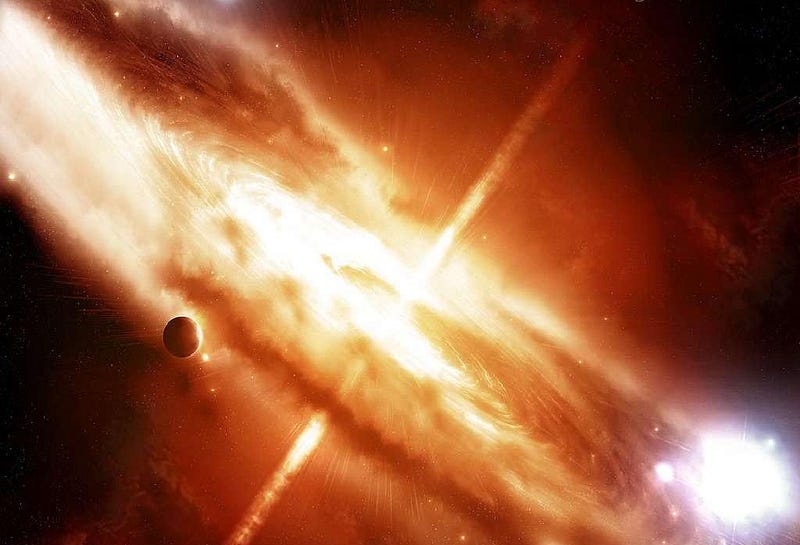
Bring it into close contact with a star, and it will similarly be swallowed, even if that star is as diffuse as a red giant.
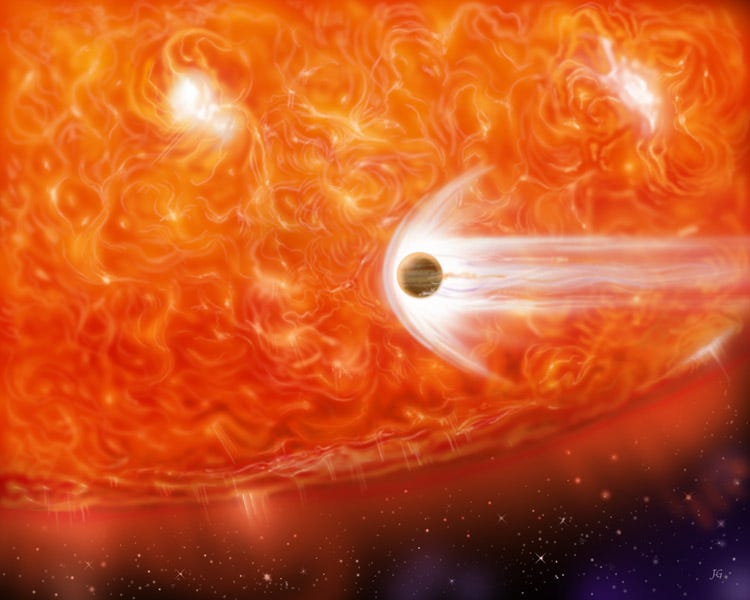
Allow it to exist too close to a supernova or a hypernova, and not only will the surface surely be fried, but the entire world could be broken up into very small pieces depending on the orientation of the blast.
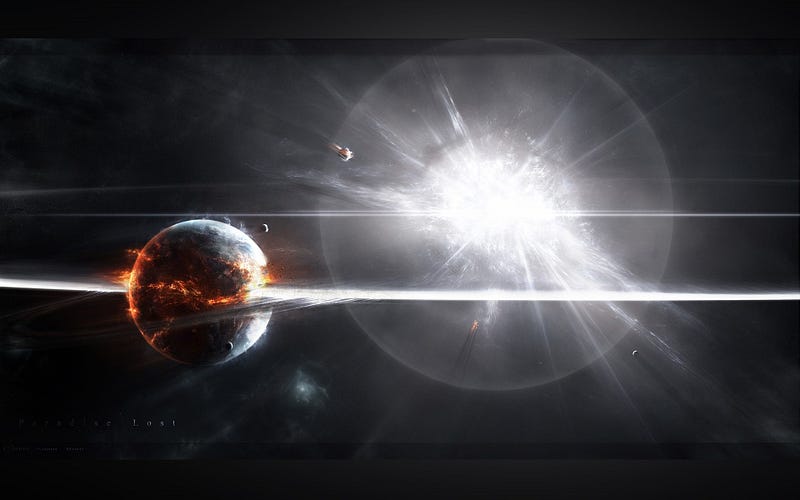
Or, for those of you who are more the DIY type, you could simply bring an asteroid’s worth of antimatter down to the planet’s core, where the matter/antimatter annihilation will produce more than enough energy to reduce the planet to no more than a dissociated pile of rubble.
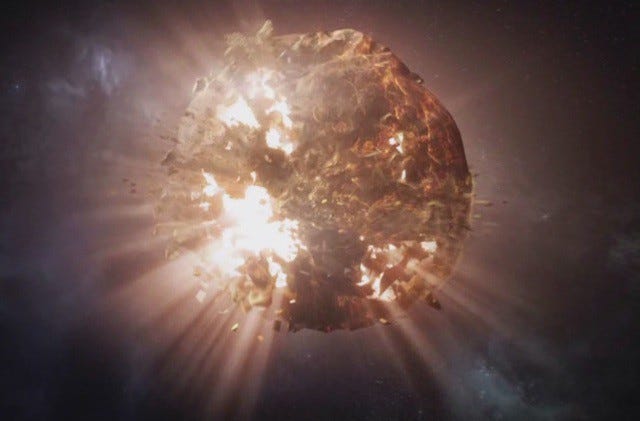
But that’s simply a single planet, in a Universe consisting of billions-to-trillions of stars and planets in each galaxy, where there are hundreds of billions of galaxies in the Universe.
What if we wanted to destroy it all?
Recently, Stephen Hawking’s new book promoted a scenario that the Higgs field — the field responsible for giving rest mass to all the fundamental particles in the Universe — might spontaneously transition from its present, metastable state to the true ground state, destroying the Universe in the process. Sounds like something worth looking into, doesn’t it? Let’s start by explaining how the Higgs field works.

Imagine you’ve got a ball at the very top of a big mountain peak, where if you move any distance in any direction, you’re going to roll down the mountain. Any direction you begin rolling in is going to take you down towards a valley, but in some directions, the valleys are at lower-or-higher elevations than others. The direction your ball begins rolling, at least to start, is totally random, and so which valley you land in is going to be random as well. Unless you’re very, very lucky — like landing in the winning slot in the ultimate game of Plinko — you’re not going to wind up in the lowest possible valley, just the lowest one in the vicinity of the direction you initially chose.

There’s a strong possibility that the potential that describes the Higgs field looks a lot like this mountainous picture, and that the Universe we inhabit, complete with the particle masses we observe, currently lives in one of these metastable valleys: one where the elevation (the value of the potential) is lower than all the surrounding regions, but not necessarily in the lowest overall state. In the picture we just painted with a ball rolling down a mountain slope, it will remain wherever it came to rest, because that’s a classical system. But the Higgs field — and the Universe in general — is a quantum system, which means that there’s a small, finite but non-zero probability that, at any given time, the value of the Higgs field in our Universe could quantum tunnel into a lower, more stable valley.
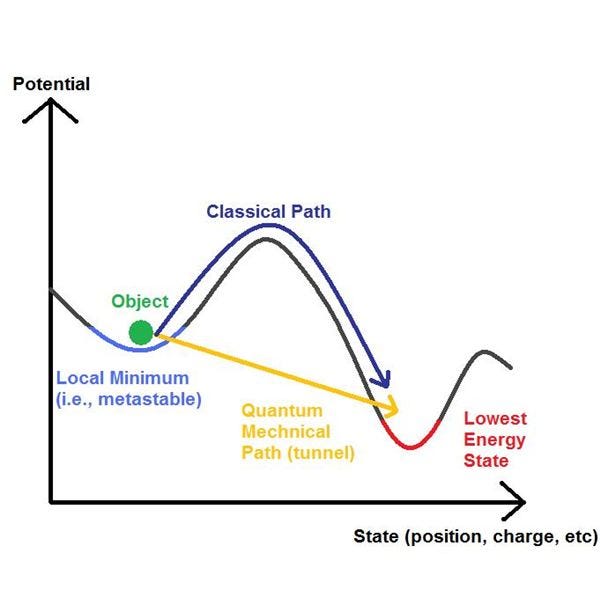
That’s the situation that Hawking is describing, and even though the probability of that occurring is very, very small, it is possible, and — if this is, in fact, how our Universe looks — it could literally happen at any given time.
But is this the situation that does, in fact, describe our Universe? What would happen to our Universe if this tunneling to a lower-energy state happened? Would it, in fact, be destroyed? Or would the changes that occur leave the Universe intact, if only a little different than before?
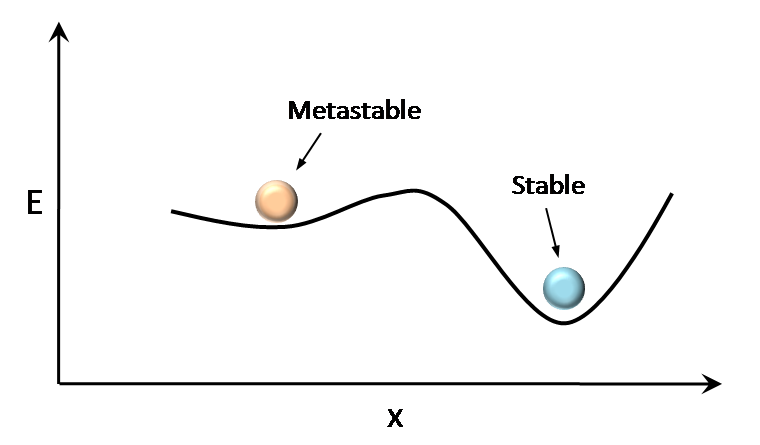
First off, it’s a very contentious claim to say that the Higgs field has settled into a metastable state. While our best calculations say that the Higgs may become unstable at energies in excess of 10^11 GeV (where a GeV is the amount of energy required to accelerate an electron from rest to a potential of one billion Volts), those are based on mass measurements of bosons such as the Higgs, W-boson as well as the top quark, that still have significant uncertainties on them. Within the measurement uncertainty, the Higgs may yet turn out to be truly stable, meaning that we already may be in the lowest part of the valley. In addition, there are strong reasons to believe that the theory of asymptotic safety describes gravity, and therefore predicts a value for the Higgs mass that’s perfectly stable, and consistent with what we observe. If this is the case, then the Higgs isn’t metastable, and the whole issue is moot.
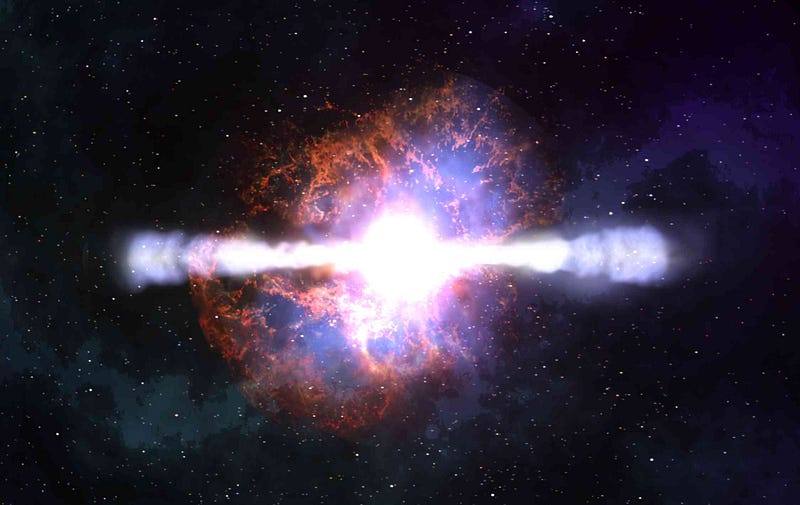
Second off, what would happen if this scenario were true, and some place in the Universe made the transition to a more stable state? It would be most likely to happen not here on Earth, nor even in our high-energy particle colliders, but near a supernova, hypernova, active galactic nucleus or supermassive black hole. It’s the highest energy locations in the Universe that are far more likely to undergo this quantum transition, where energies of approximately 10^10 GeV and above are routinely achieved. For comparison, the highest energies achieved at the LHC are only around 10^4 GeV, which means the odds of the transition happening by us are far lower.
If the transition happened, the laws of physics would instantly change, with properties like the masses of particles, the strength of interactions and the sizes of atoms changing instantaneously where the Higgs field achieved this lower value. In addition, the lower value of the Higgs field would begin to take over the Universe, with the transition propagating outward at the speed of light. This is both good and bad for us. It’s bad because we’d never be able to see it coming; all the observable signals of the Universe propagate no faster than the speed of light in vacuum, and so if the transition is propagating at that speed, we’d have no signal of it before it was on top of us. But it’s also good, because the Universe is accelerating in its expansion, meaning that — for 97% of the observable Universe — a signal propagating at the speed of light will never reach us. So even if the transition happens somewhere in our Universe, it’s unlikely to affect us.
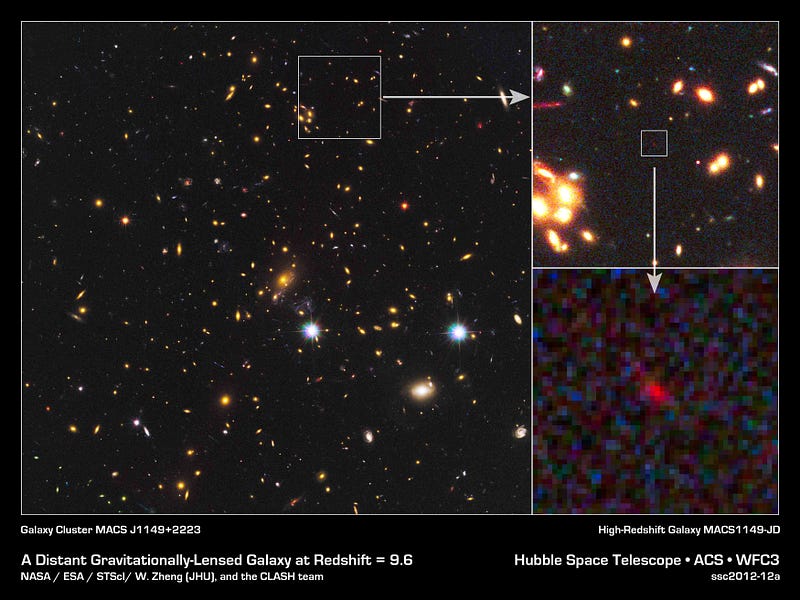
And finally, if the Universe turns out to be metastable but only very slightly so, the changes in the laws of physics, the sizes of atoms, etc., might be so small that — although they’ll be perceptible to physicists experimenting with them and probing the laws and properties to high-precision — it might not destroy anything, but simply impart to them slightly different properties.
So although this might be a possible way to destroy the Universe, it’s very unlikely, it might not be a possible way to destroy it, it might not even affect us if it does happen, and it’s also something we have really no control over.
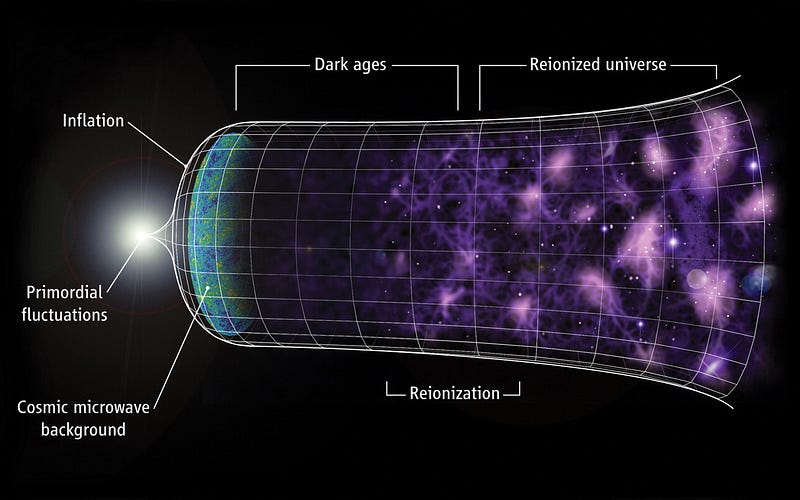
But if you wanted to destroy the Universe, relying on the Higgs is a fool’s game. The smart money is to bet on cosmic inflation, and to remember that the only reason our Universe exists as it does is because inflation came to an end. If we could reactivate it — if we could create a new inflationary epoch — the ultra-rapid expansion of the Universe that would ensue, and the incredibly intense energy intrinsic to space itself, would push apart not only the galaxies, but solar systems, people, cells, molecules and even individual atoms.
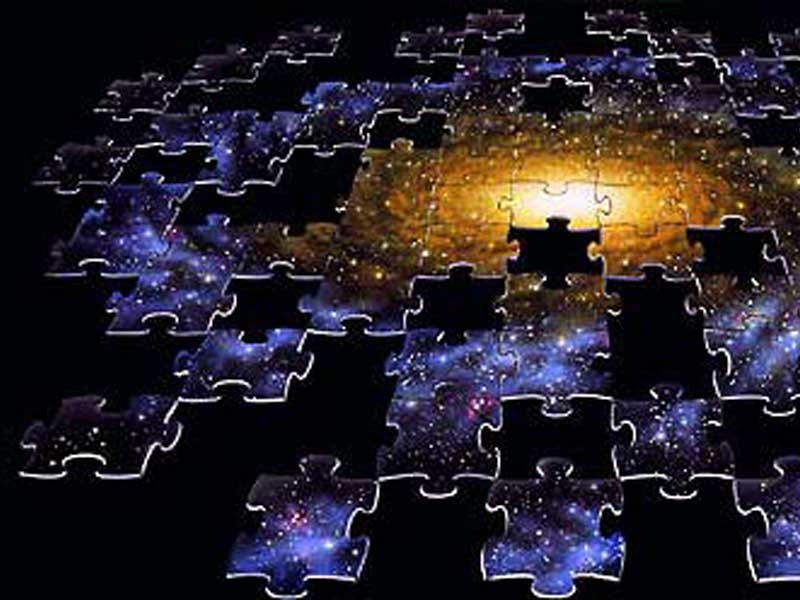
So how would that work?
Inflation was the state that existed prior to our Universe being filled with matter and radiation; prior to our Universe being in a hot, dense, expanding-and-cooling state; prior to the Big Bang. All the energy that exploded into the matter-and-radiation at the moment of the Big Bang came from somewhere, and inflation tells us that the “where” it came from was from energy intrinsic to space itself. The energy intrinsic to space itself now is much lower, at least a factor of 10^27 and possibly as much as 10^31 times smaller than it was during inflation.
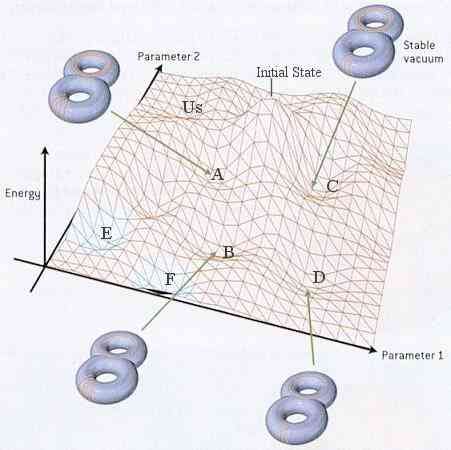
But if we can achieve those incredibly high energies again — and do keep in mind that these are higher energies by far than any known energy source in the Universe achieves — we could perhaps restore a state of inflation to our Universe, destroying everything within it and hitting the cosmic reset button.
All we’d need to do, if we wanted to try, is create ultra-high energy collisions with an energy of between 10^15-and-10^19 GeV, and hope that the transition to an inflationary state occurs once again. Although this isn’t right now practically achievable with current technology, we know exactly what we’d need to do to make this happen. You see, we know how to accelerate particle/antiparticle pairs in opposite directions in a circle, and we know that the bigger the magnetic field and the larger the radius of the circle, the faster we can get the particles to go, and the higher energies we can achieve. The old Tevatron at Fermilab achieved energies of about 10^3 GeV per particle, resulting in up to 2 × 10^3 GeV released during a particle-antiparticle collision operating under this principle, and the LHC (doing particle-particle collisions instead) is poised to reach about 7 × 10^3 GeV per particle, giving us up to 1.4 × 10^4 GeV per collision.
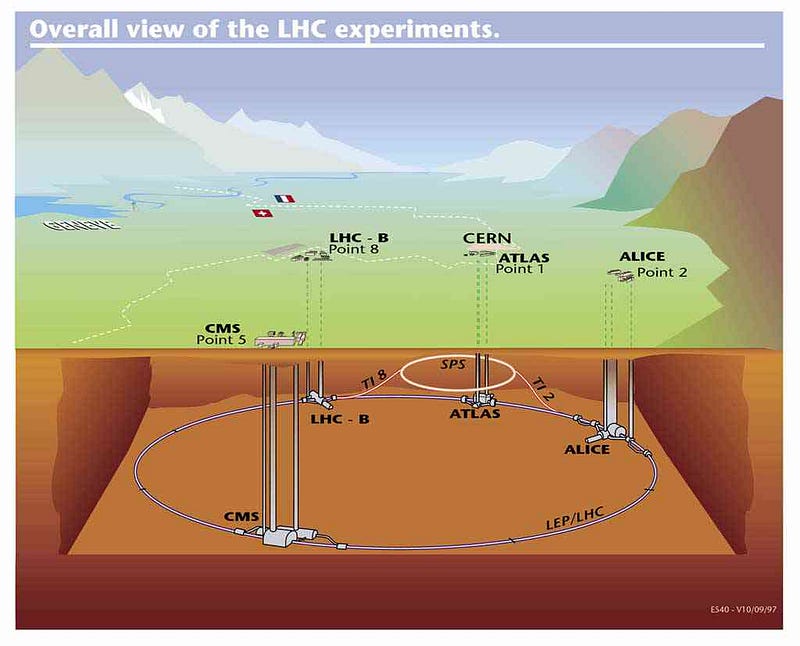
Ignoring the phenomenon of synchrotron radiation (which we can compensate for by building a larger radius ring anyway), the formula for a particle’s approximate energy is given by an incredibly simple relation: take the strength of the maximum magnetic field (in Tesla), multiply by the radius of the ring (in kilometers), and divide by four. That is the maximum energy of your particle in GeV.
So if we want to reach 10^19 GeV-per-particle, the approximate Planck energy, all we’d need to do is build a machine identical to the LHC in all ways, except instead of a ring that’s about 4.1 km in radius, we’d need one that was 5.9 × 10^14 km in radius. Yes, that’s very, very big, but it isn’t impossibly big. We’re not talking about building something the size of the Universe, but rather about building something only about four million times the size of Earth’s orbit around the Sun. And that’s being very conservative, assuming it takes those incredibly high energies to restore inflation. It could happen at a factor of 1000 or even 10,000 less in energy, which means that much smaller of a ring. Alternatively, we could achieve practical improvements in electromagnet technology, reducing the radius of a ring even further.
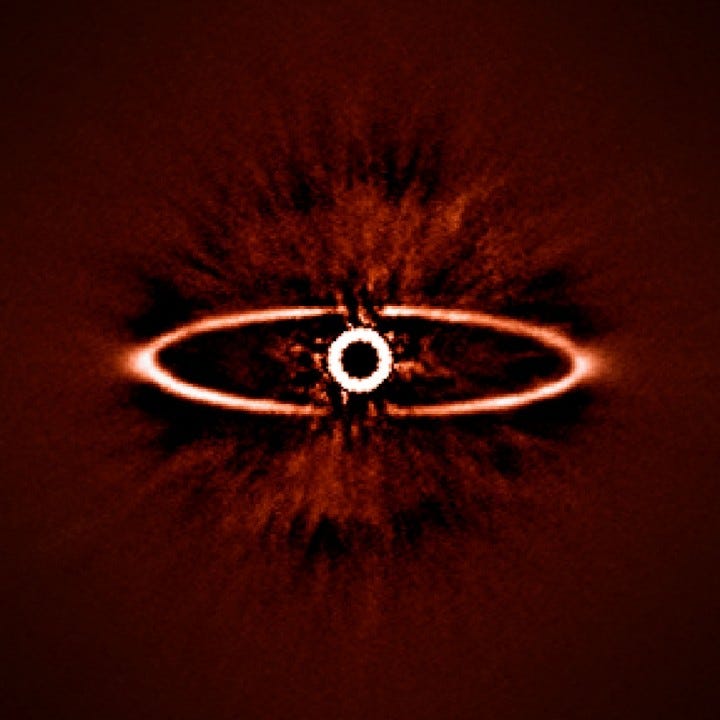
So cheer up! Destroying the entire Universe, and pushing the cosmic reset button, isn’t something we have to wait around for, and isn’t even something that’s totally out of our control. We have the science today to make it happen; the only challenge is the materials, the engineering, and the money. Put those all together, and the end of the Universe — and the birth of an entire new one — is yours!
Have your apocalyptic say at the Starts With A Bang forum on Scienceblogs!





